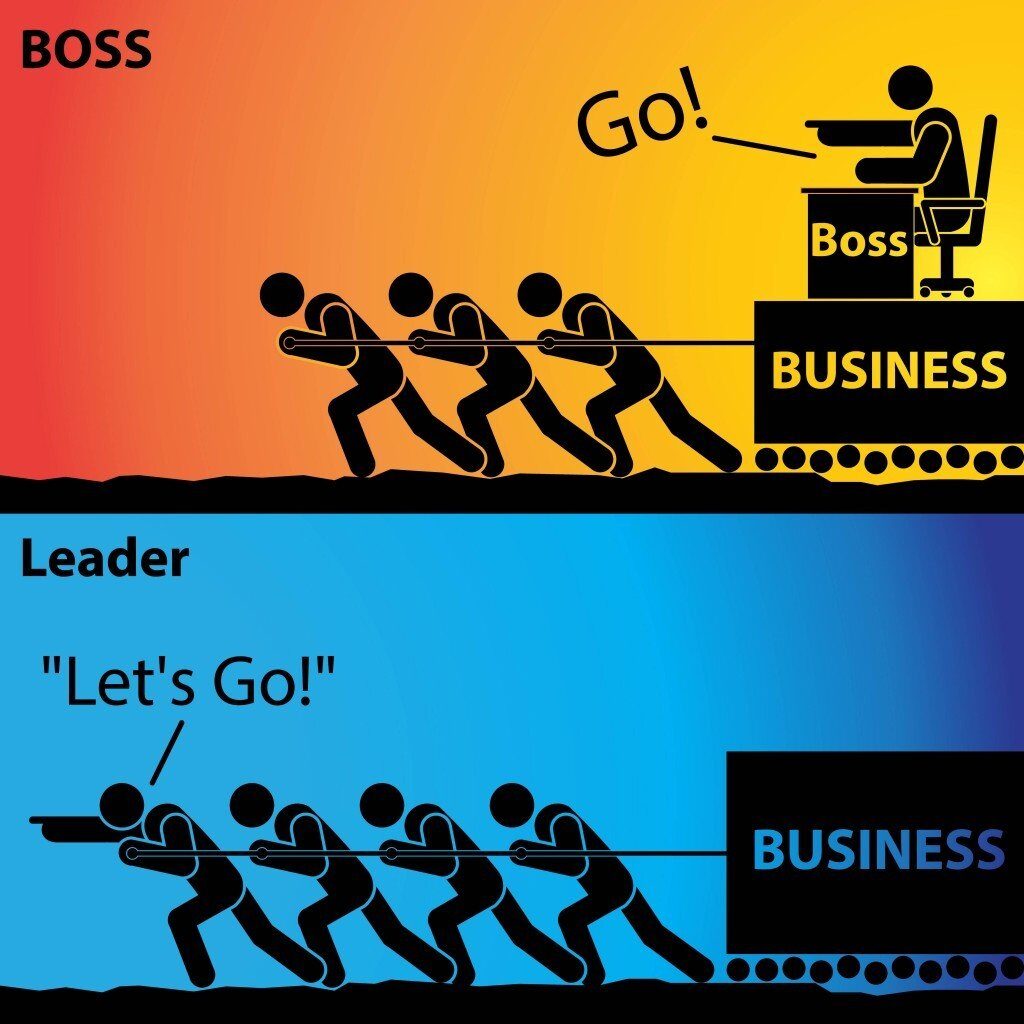Friends did you know that your leadership style may be responsible for keeping you away from your dream business?
If you are also a first generation entrepreneur then quite likely you may not have developed an effective leadership style and as a result you may not be able to achieve your business goals.
As a business coach and consultant I work with lots of small and medium business owners and support them to scale up their revenues and maximize their profits. While working very closely with my clients I found that very frequently they miss on critical steps of leadership as a result they struggle in getting the results which they expect in their business.
Today I am going to share with you the seven little steps which you must include in your leadership style to achieve your revenue and profit goals.
But before I take you through the seven steps let me share with you what the leadership is all about. Leadership is the art and science of influencing people to achieve the desired objectives.
So keeping this in mind we need to learn the 7 common sense steps which you need to include in your leadership style. These 7 steps are as follows:

- Planning:
Planning is the beginning of business leadership. A business owner has to plan for the business goals, what results you want to achieve in your business. At any point of time in your business you should be very clear what is your Vision and Mission in relation to your business. You also need to plan the relevant strategies and action plans to achieve your business goals. You need to plan for the resources like the financial capital as well as the human resources. As Benjamin Franklin says, “if you fail to plan, then you are actually planning to fail”. Lots of business owners keep their plans in their mind. But in real sense that is not planning. A plan has to come on paper. And a proper structure must be followed for planning.
At one point of time, Abraham Lincoln said,” Give me six hours to chop down a tree and I will spend the first four sharpening the axe.” What he means by sharpening the Axe is that he wants to spend sufficient time for planning before getting into the action. Therefore you need to develop your skills for planning.
2. Organizing:
The next important steps in your leadership must be organizing, because organizing is the first step towards bringing your plan into reality. The great business leaders always spend time in organizing. You need to organize your tasks and your resources. You must create an effective organizational structure and design to bring your vision into reality. If you are organized, you will be able to save plenty of your time. And as a business owner you would know very well that, time is money, time is the most precious resource, once the time is lost it cannot be retrieved back. For every minute spent organizing, an hour is earned.” – Anonymous.
Organizing is the journey. It is not a destination. Even if you are well organized today, but tomorrow is fresh day and new challenges are bound to come. So you need to organize again for tomorrow in a fresh manner. Organizing means having all the resources available at the right time and right place. Doing things right at the first place itself. Organizing helps you save resources of all types.
3. Staffing:
If you want to achieve big results in a business you cannot do it single-handedly. Therefore you must have a proper team to support you. If you are a leader then you must have a team of followers.
For creating an effective team you must have very well defined roles, along with the job specification and skills. You must have a higher level of clarity that what kind of results your staff members will produce in your business. Once you have created a well-defined job description and key result areas, for the different roles as per the organization structure you must implement those effective ways of hiring your team members. For this purpose you must create a proper hiring plan including the sourcing and selection methods. Staffing also includes training and motivating the people so that they become capable of delivering the expected results.
“Hire people who are smarter than you are—whose talents surpass yours—and give them opportunities for growth. It’s the smart thing to do and it is a sign of high personal humility”. –Bruna Martinuzzi,
4. Systematizing:
Your team members must be given the effective systems so that they can produce the optimum results. Creating systems in your business means that you are no longer dependent on certain people rather you are defending these systems. The people may fail but a system does not fail. The employees keep coming and going but if you have created it the effective system of working in your business then your business will continue to produce the predictable results. The simplest way of creating the system in your business is to create standard operating procedures (SOP) with defined rules and timelines. You must create the flowchart for delivery of all the critical tasks your business and train your people to follow the same. If you create systems in a business then and you as the business owner makes yourself redundant and concentrate on other important activities like market research, R&D and innovation.
“In order for any business to succeed, it must first become a system so that the business functions exactly the same way every time down to the last detail” –Rick Harshaw, from Monopolize Your Marketplace).
5. Controlling:
Once you have created a desired team and given them the proper systems to work it is extremely important to control the entire activity of production, operations and selling. People need guidance and supervision time to time. They need attention and also recognition. Therefore controlling becomes a very important step of your leadership. You must create the controlling tools like performance measurement system, individual and team reviews, giving constructive feedback, and create reward and penalty system in a business.
“Measurement is the first step that leads to control and eventually to improvement. If you can’t measure something, you can’t understand it. If you can’t understand it, you can’t control it. If you can’t control it, you can’t improve it.”– H. James Harrington
6. Leading change:
Only one thing which is constant in the business is “change”. The world is constantly changing and evolving therefore the business leader must also learn to adapt to the changing environment and learn new ways of managing the business. Therefore the leading for change involves continuous learning and development of organization. Leading change is partly science and party the art. Leaders must know the techniques to apply to create effective and lasting organizational changes and they must also know that what techniques to utilize in which particular situation. Leading for change is challenging. Therefore the leaders must involve this particular step in their leading style on consistent basis.
“Believe that there are no limitations, no barriers to your success – you will be empowered and you will achieve.” -Ursula Burns, Chairperson and CEO of VEON

As SME business leader, you need to evaluate your business leadership style and analyze whether you are using the above steps effectively and wherever required. You must constantly learn more and more about the above mentioned six steps so that you can lead your organization for achieving your Vision and Mission.
As business coach and consultant this is my vision to support more than a million SME business owners to scale up their revenues and maximize their profit. After having experience with multiple business owners I have found that many of the above steps are generally missing from their day-to-day leadership practices. Consequently, they get frustrated and business results get delayed or sometimes they don’t even achieve them.
So why don’t you take some time and reflect on your management style today. List down the various practices you wish to implement, plan to practice all the six steps and see how successful you are in your leadership style?



